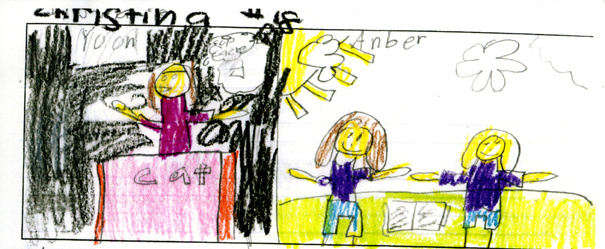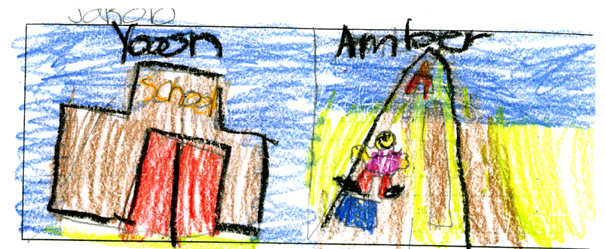Two Examples of Sudents' Artwork and Writing: Second-grade students
Christina Buliarello and Jakob B. compared the literacy learning
experiences of the main characters in Amber on the Mountain
and My Name is Yoon. These pieces show how Christina and
Jakob used background knowledge gained from one text to understand
another text. In both their artwork and their writing, they demonstrate
their proficiency at making text-to-text connections. (These pieces
have not been edited.)

Christina:
Amber lived on a top of a mounitin. Yoon lived in korea and moved
to America. comparing they are both shy and same age. Amber didn't
go to school. Yoon did go to school and learned ther. Amber learned
how to with a friend. They both read first then the learned how
to wite after reading.

Jakob:
We are comparing the book My Nam is Yoon and Amber on the Moutain.
One of the diffrent's is Amber like her home. Yoon didn't. Amber
want's to learn and Yoon didn't. A kid taught Amber and adult
taught Yoon. And one of the same thing is that there both shy.
And they both make a friend and it seems to help them lean to
read and write. But they both end up learning how to read and
write.
Thank you to the students and families for allowing us to share
their work. More examples from Melody and Kim's lesson are available
in Judi's workshops.
AASL Standards
for the 21st-Century Learner:
- Use prior and
background knowledge as context for new learning.
(1.1.2)�
- Read,
view, and listen for information presented in any format (e.g.,
textual, visual, media, digital) in order to make inferences
and gather meaning. (1.1.6)
- Organize
knowledge so it is useful. (2.1.2)�
- Connect ideas
to own interests and previous knowledge and experience.
(4.1.5)
|